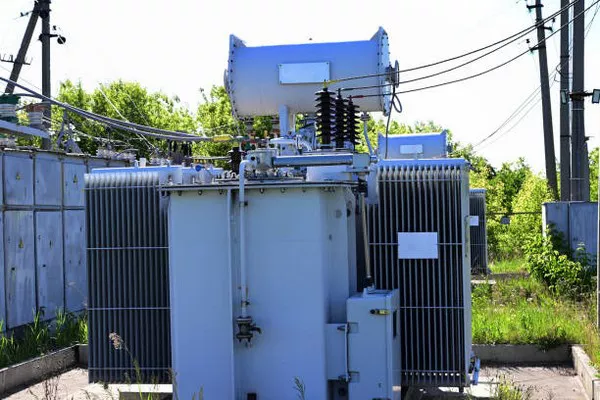Welding is a crucial process in various industries, from construction and manufacturing to automotive repair and fabrication. To ensure a smooth and efficient welding operation, a reliable source of power is essential. Often, welding sites are located in remote areas or lack access to a stable power grid. In such situations, a generator becomes a necessity to power welding equipment. Selecting the right generator for your welding needs is of paramount importance to ensure safety, performance, and cost-efficiency. In this comprehensive guide, we will delve into the factors you need to consider when choosing a generator to run a welder effectively.
Power Requirements for Welding
Before delving into generator selection, it’s crucial to understand the power requirements of your welding equipment. Welding machines come in various sizes and types, each with its specific power needs. The primary factors affecting power requirements for a welder are:
Welding Process: Different welding processes, such as Stick (SMAW), MIG (GMAW), TIG (GTAW), and flux-cored, have varying power demands. MIG and TIG welders are generally more energy-efficient compared to Stick welders.
Welding Current: Welders are rated in terms of their amperage output. Higher current settings require more power. Make sure to check the amperage range of your welding machine.
Duty Cycle: The duty cycle is a crucial factor in determining a generator’s size. It refers to the amount of time a welder can operate continuously at a specific amperage output. A higher duty cycle requires a more powerful generator.
Voltage: Welding machines may require different input voltages, such as 110V, 220V, or 3-phase 460V. The generator should match the required voltage to operate the welder efficiently.
Generator Selection Criteria
Once you’ve identified the power requirements of your welding equipment, it’s time to select the right generator. Consider the following criteria:
Power Output Rating: The generator’s power output rating is usually measured in kilowatts (kW) or kilovolt-amperes (kVA). To determine the required power output, add a safety margin to your welding machine’s power consumption. Generators typically have both continuous and peak power ratings. Ensure the continuous power rating meets your needs.
Fuel Type: Generators can be powered by various fuels, including gasoline, diesel, propane, and natural gas. Diesel generators are preferred for heavy-duty applications due to their fuel efficiency and durability. However, the availability and cost of fuel in your area should also be considered.
Portability: Consider the portability of the generator, especially if you need to move it to different job sites. Smaller, portable generators are more convenient but may have limitations in terms of power output.
Noise Level: Welding sites often have noise restrictions, so a quiet generator can be beneficial. Check the generator’s decibel rating to ensure it complies with local regulations and provides a comfortable working environment.
Runtime: Evaluate the generator’s fuel tank capacity and runtime on a single tank of fuel. This is particularly important if you need to operate the welder for extended periods without refueling.
Voltage and Phase: Ensure that the generator’s output voltage and phase match the requirements of your welding machine. Some welders may require a 3-phase power supply, which is not provided by all generators.
Portability and Mobility: Depending on your welding needs, you may require a stationary generator or a portable one. Stationary generators are usually larger and suitable for fixed sites, while portable generators are more versatile and can be moved to different locations.
Environmental Considerations: If you are working in environmentally sensitive areas or need to comply with emissions regulations, consider generators that are designed to be more eco-friendly.
Generator Sizing
Properly sizing your generator is crucial to ensure the consistent and safe operation of your welder. To determine the appropriate generator size, follow these steps:
Calculate Total Power Requirements: Add the rated power consumption of your welding machine, including any safety margin you’ve considered.
Duty Cycle: Consider the duty cycle of your welder. For example, if your welding machine has a 60% duty cycle at 200 amps, you need a generator that can provide at least 200 amps for 60% of the time without overheating.
Voltage and Phase: Ensure the generator’s output voltage and phase match the requirements of your welder.
Starting Current: Some welding machines have a higher starting current than their rated current. Ensure the generator can handle the surge in power demand during startup.
Future Expansion: If you plan to expand your welding setup in the future, consider a generator with a bit more capacity than your current needs.
Generator Maintenance
Once you’ve selected the right generator for your welding needs, it’s essential to perform regular maintenance to ensure its long-term reliability. Here are some key maintenance tasks to keep in mind:
Fuel and Oil: Regularly check fuel and oil levels, change the oil as per the manufacturer’s recommendations, and ensure clean fuel filters.
Air Filters: Clean or replace air filters regularly to maintain proper engine performance and fuel efficiency.
Cooling System: Ensure the cooling system is functioning correctly to prevent overheating.
Electrical Connections: Check all electrical connections for loose wires and corrosion.
Generator Load: Avoid overloading the generator, as this can lead to reduced lifespan and equipment damage.
Storage: If the generator is not in use for an extended period, store it properly by following the manufacturer’s guidelines.
Conclusion
Selecting the right generator to power your welder is crucial for ensuring a safe and efficient welding operation. Careful consideration of your welding machine’s power requirements, generator criteria, and proper sizing will help you make an informed decision. Remember that regular maintenance is essential to keep your generator in optimal working condition and extend its lifespan. By adhering to these guidelines, you can ensure that your welding equipment has a reliable source of power, allowing you to complete your projects with precision and efficiency.

